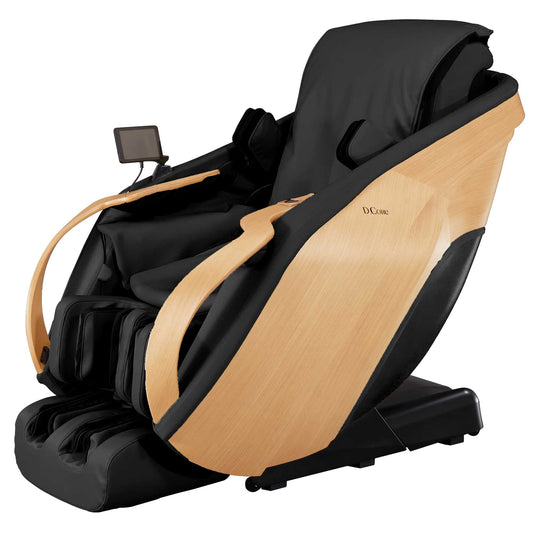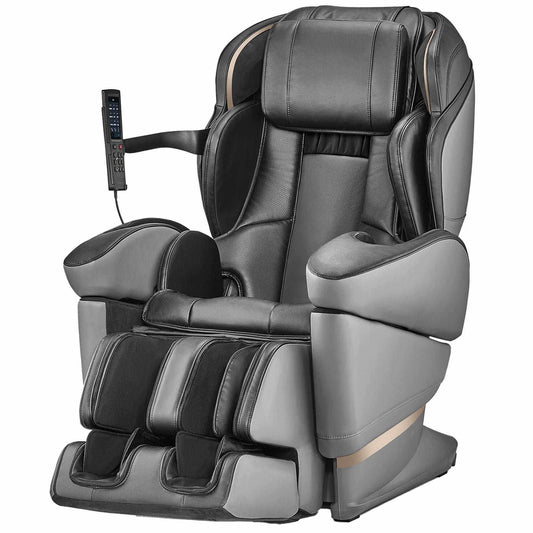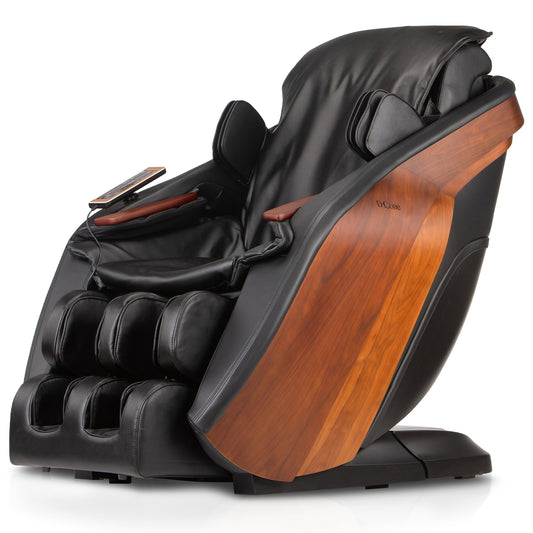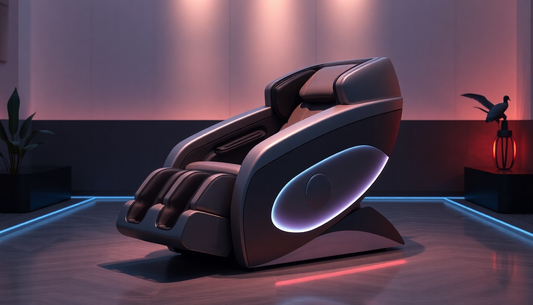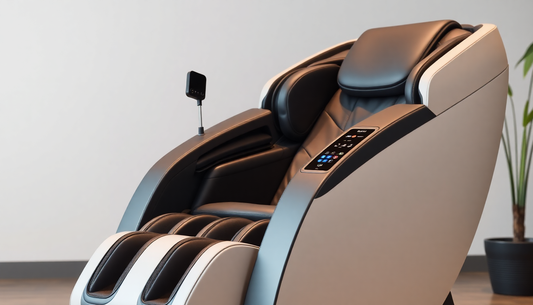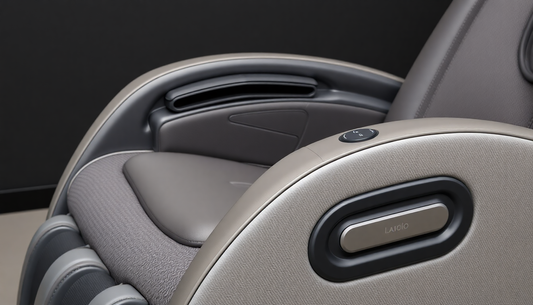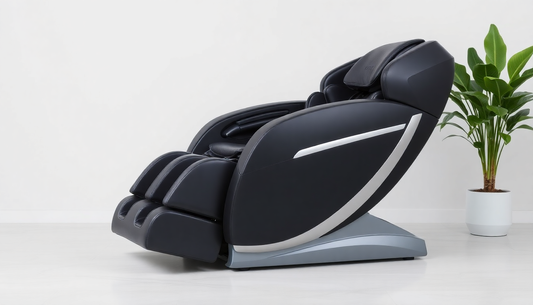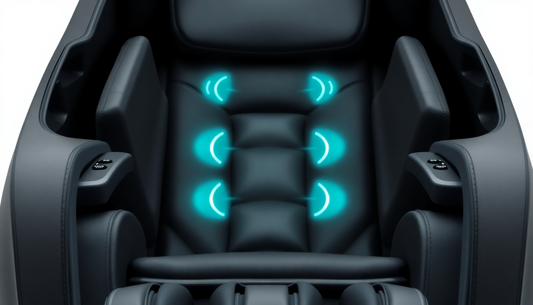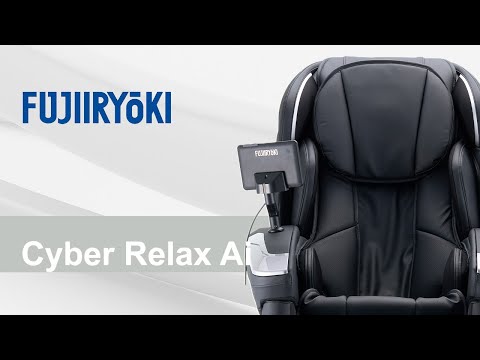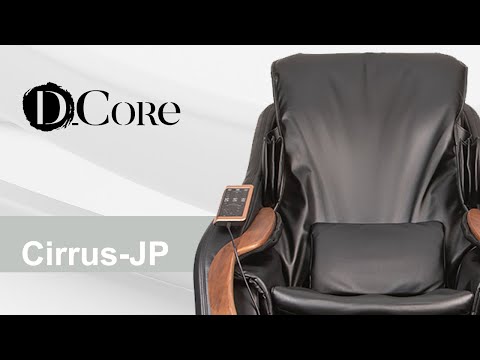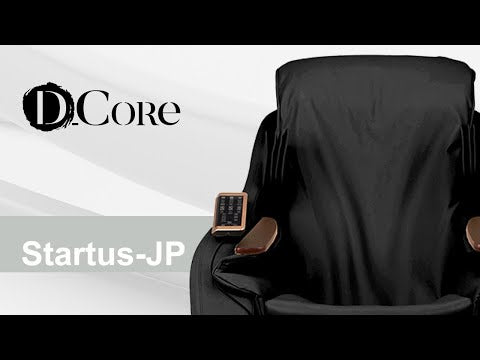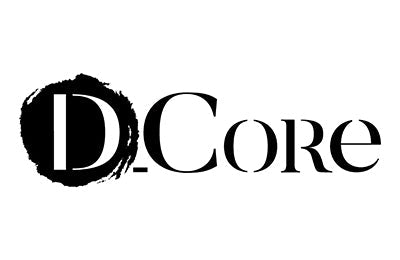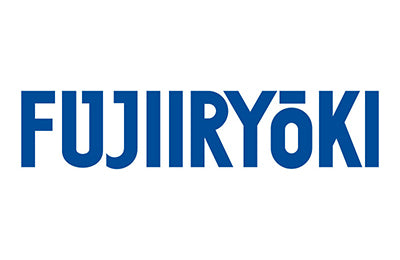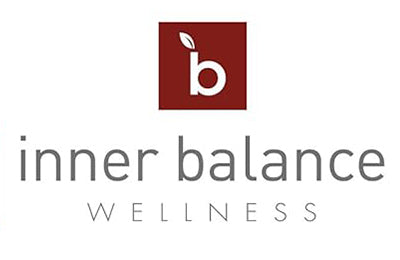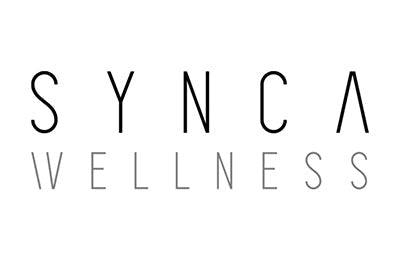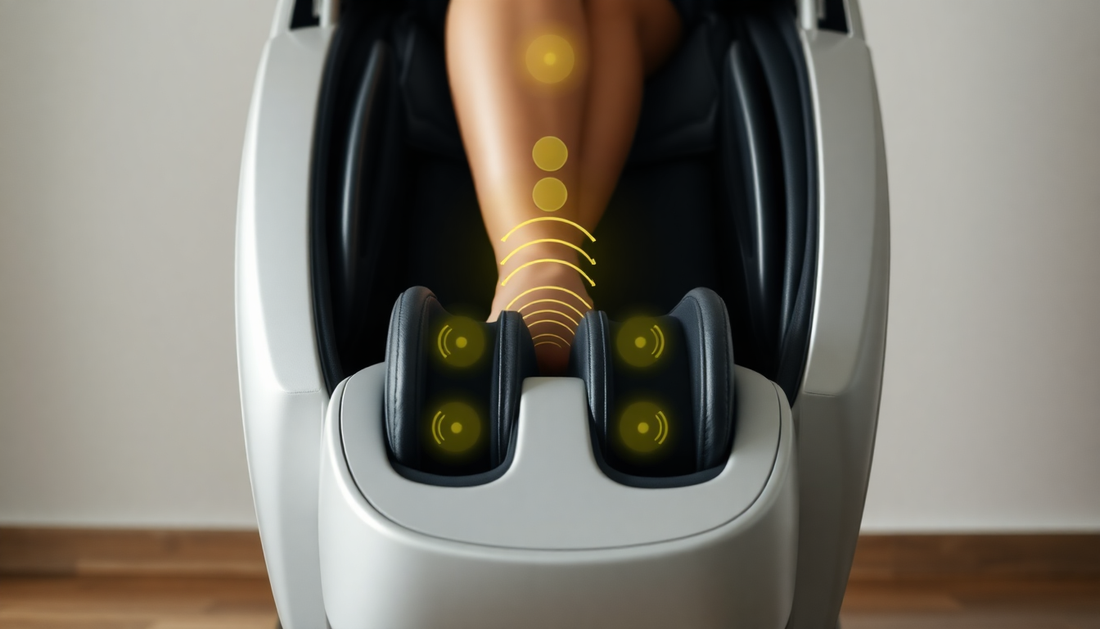
Fujiiryoki 마사지 의자 비교 가이드: 당신에게 딱 맞는 제품을 찾아보세요
소개: 4일간의 Fujiiryoki 마스터클래스에 오신 것을 환영합니다
이 종합 마스터클래스는 Calm Plus, Cyber Relax Ai, Cyber Relax Pro, Cyber Relax Elite 등 네 가지 Fujiiryoki 마사지 의자 모델을 하루씩 깊이 있게 다루며 마사지 기술, 목표 부위(발목부터 머리까지), 측정 가능한 치료 효과를 설명합니다. 구매자로서 적합한 모델을 조사하든, 웰니스 전문가로서 의자 활용을 통합하든, 회복 루틴 최적화를 원하는 사용자든, 이 가이드는 단계별 시퀀스, 프로그램 설정, 안전 지침, 각 기술과 목표 부위에 대한 근거 기반 설명을 제공합니다.
이 마스터클래스 대상
- 목표 회복과 일상적인 휴식을 추구하는 가정 사용자.
- 회복 프로토콜 가속화를 원하는 운동선수 및 트레이너.
- 재활 보조 도구를 탐색하는 임상가 및 치료사.
- Fujiiryoki 의자에 대한 권위 있는 SEO 친화적 콘텐츠가 필요한 소매업자 및 콘텐츠 제작자.
개요: Fujiiryoki 라인업 (간단 소개)
- Calm Plus — 일상적인 휴식과 혈액 순환 개선을 위해 설계된 부드럽고 편안함을 우선시하는 모델.
- Cyber Relax Ai — 센서 기반 개인화 및 적응형 강도로 결절과 트리거 포인트를 집중적으로 관리합니다.
- Cyber Relax Pro — 척추 정렬과 심부 조직 치료를 위한 강력한 메커니즘을 갖춘 임상 등급 개입.
- Cyber Relax Elite — 포괄적인 메커니즘과 정교한 프로그램을 결합한 프리미엄 고정밀 기능으로 엘리트 회복을 제공합니다.
마스터클래스 구성
4일 동안, 당신은 다음을 하게 됩니다:
- 하루에 한 모델에 맞춘 발목부터 머리까지의 전체 시퀀스를 배우세요.
- 각 모델이 어떤 기술을 가장 잘 구현하는지 그리고 그 이유를 이해하세요.
- 혈류 조절, 통증 완화, 부상 회복과 같은 치료 목표에 기술을 매핑하세요.
- 실용적인 팁, 안전 고려사항, 진행 상황을 측정할 모니터링 지표를 얻으세요.
대상 부위의 해부학 & 중요성
발목에서 머리까지 해부학을 아는 것은 각 마사지 세션을 맞춤화하는 데 도움이 됩니다. 아래는 이 마스터클래스에서 다루는 대상 부위와 각 부위의 주요 목표입니다.
- 발목 & 뒤꿈치: 말단 순환 개선, 부종 감소, 족저근막 긴장 해결.
- 발 & 발가락: 반사요법 지점이 자율신경 균형과 신경병증 증상을 조절할 수 있습니다.
- 종아리 & 허벅지: 장시간 서 있거나 달리기, 앉아서 일하는 동안 생긴 긴장 해소.
- 무릎: 이동성 지원 및 관절 주변 긴장 완화.
- 다리 & 전체 다리: 정맥 환류 촉진, 지연성 근육통(DOMS) 감소.
- 손 & 손목: 반복적 긴장 완화, 그립 이동성 향상.
- 하부 등 & 척추: 자세 관련 및 기계적 요통 타겟팅; 척추 정렬 지원.
- 어깨 & 목: 앞으로 숙인 머리 자세, 책상 관련 긴장, 경추성 두통 해결.
- 머리 & 두피: 긴장성 두통 감소, 부교감 신경 활성화를 통한 수면 시작 개선.
마사지 기술 설명: 각 기술의 기능과 사용 시기
Fujiiryoki 의자는 여러 인간 기술을 모방합니다. 각 기술을 언제 사용할지 아는 것은 특정 치료 목표에 맞게 세션을 맞춤화하는 데 도움이 됩니다.
- 스웨디시 마사지: 길고 부드러운 스트로크와 가벼운 반죽 동작. 혈액 순환 개선, 이완, 깊은 마사지 전 조직을 따뜻하게 하는 데 가장 좋습니다.
- 딥 티슈 마사지: 깊은 근막과 근육층에 도달하기 위해 고압의 느린 스트로크를 사용합니다. 만성 결절, 근육 재구성, 부상 회복(주의 필요)에 사용합니다.
- 트리거 포인트 테라피: 결절에 집중 압력을 가해 연관 통증을 완화합니다. 긴장된 근육 띠와 관련된 어깨, 목, 요추 트리거 포인트에 이상적입니다.
- 지압: 고전적인 지점에 일정한 압력을 가합니다. 스트레스 완화, 소화 개선, 수면 지원과 같은 전신 효과에 유용합니다.
- 지압 마사지: 경락선을 따라 손가락 압력을 모방한 누르고 유지하는 기법. 자율신경 조절 및 척추 정렬 신호에 효과적.
- 반사요법: 발/손 반사 구역을 표적으로 자극하여 장기 시스템 및 전체 신경계 균형에 영향.
- 니딩: 국소 혈류 증가, 유착 분해, 조직 연화를 위한 원형 압박 운동.
기법이 치료적 이점에 미치는 영향
- 혈류 조절: 스웨디시 스트로크, 니딩, 맥동 압박으로 미세순환 강화.
- 피로 완화: 리드미컬한 니딩과 중간 강도 심부 조직으로 대사산물 배출 및 피로감 감소.
- 유연성 향상: 심부 조직과 조절된 스트레칭(가능한 경우)을 번갈아 가며 가동 범위 개선.
- 부상 회복: 신중한 트리거 포인트 및 심부 조직과 가벼운 견인, 순환 증가로 치유 가속.
- 근육 치료 & 조직 치료: 워밍업(스웨디시)부터 표적 심부 작업(트리거 포인트/심부 조직), 재구성(니딩/장시간 유지)까지 체계적 진행.
- 통증 완화 & 척추 정렬: 지압, 견인 유사 기법, 표적 심부 조직으로 불균형 교정 및 통증 신호 감소.
- 스트레스 완화: 반사요법, 두피 지압, 저주파 진동으로 부교감 신경 톤 증가.
일일 심층 탐구: 1일차 — Calm Plus (부드럽고 일상적인 회복)
Calm Plus는 편안함, 진정 시퀀스, 순환을 우선시합니다. 이 날은 일상 사용자들의 회복 기준을 구축하는 데 중점 둡니다.
전체 시퀀스 (45분 권장)
- 0-5분: 도착 및 스캔. 자율신경계 준비를 위해 부드러운 전족 반사요법으로 시작.
- 5-12분: 발목 & 뒤꿈치 — 느린 니딩과 롤링으로 족저근막을 움직이고 말초 정맥 환류 개선.
- 12-22분: 종아리 & 허벅지 — 스웨디시 스트로크와 부드러운 니딩으로 젖산 축적 및 피로 감소.
- 22-28분: 무릎 & 다리 — 무릎 경락점 주변의 온화한 지압으로 이동성 지원 및 뻣뻣함 감소.
- 28-34분: 하부 등 & 척추 — 넓은 스웨디시 스트로크와 부드러운 지압점으로 긴장 완화 및 척추 감압 촉진.
- 34-40분: 어깨, 목, & 상부 등 — 롤링 니딩, 저강도 트리거 포인트 부드럽게 눌러 책상 작업으로 인한 긴장 완화.
- 40-45분: 머리 및 두피 — 가벼운 진동과 부드러운 시아추로 이완과 수면 준비 촉진.
최적 사용 및 사용자 프로필
- 일상적인 이완, 가벼운 자세 교정, 노인 및 가벼운 피로에 취약한 사용자를 위한 순환 촉진.
- 권장 빈도: 매일 또는 격일, 내성에 따라 20~45분.
프로그램 설정 및 팁
- 강도: 낮음에서 중간. 불편함을 피하는 것이 목표이며, 세션은 회복적이어야 합니다.
- 프로그램: 'Daily Comfort' 또는 'Sleep Prep'을 사용하고 저온과 결합해 조직 유연성을 높이세요.
- 모니터링: 24주간 간단한 일지에 수면 시작 시간과 아침 경직을 기록하여 효과를 측정하세요.
Calm Plus의 금기 사항 및 안전
- 급성 부상이나 개방성 상처에는 공격적인 심부 조직 설정을 피하세요.
- 임신 중인 경우 하복부 또는 강한 요추 프로그램 사용 전에 의료 제공자와 상담하세요.
- 순환기 질환이 있는 사용자는 압박 프로그램 전에 의사와 상담해야 합니다.
사례 예: 바쁜 직장인
38세 그래픽 디자이너 Sarah는 목 경직과 수면 장애로 Calm Plus를 매일 밤 30분씩 6주간 사용했습니다. 그녀는 수면 질 개선, 목 통증 감소, 일반 의약품 수면제 의존도 감소를 보고했습니다. 주요 구성 요소는 집중된 어깨/목 프로그램과 저녁 두피 시아추였습니다.
2일차 — Cyber Relax Ai (스마트, 적응형 치료)
Cyber Relax Ai는 센서와 적응 알고리즘을 사용해 세션을 신체에 맞게 조정합니다. 이 모델은 동적 트리거 포인트 해제와 개인 맞춤형 심부 조직 작업에 탁월합니다.
전체 시퀀스 (301분 권장)
- 0-3분: 자동 스캔. AI 스캔이 긴장 부위를 찾아 강도 수준을 제안하도록 허용하세요.
- 3-8분: 발 및 발목 — 정밀 반사요법과 조절 가능한 압박으로 족저 불편감 및 발목 경직 완화.
- 8-15분: 종아리 및 허벅지 — 센서 가이드 깊은 반죽, 대체 속도로 대사 부산물 배출.
- 15-22분: 무릎 및 다리 — 주위 관절 긴장 완화를 위한 표적 트리거 포인트 펄스 (러너에게 이상적).
- 22-30분: 하부 등 및 상부 등 — AI 매핑된 딥 티슈 및 국소 트리거 포인트 홀드-릴리스로 만성 결절 감소 및 척추 정렬 촉진.
- 30분: 간단한 목과 머리 조절 — 맞춤형 시아추 두드림으로 마무리하여 두통 위험 감소.
Cyber Relax Ai가 뛰어난 이유
- 실시간 적응은 허용되는 부위에서는 강한 치료를 제공하고 민감한 부위 근처에서는 강도를 줄입니다.
- 트리거 포인트 타이밍의 정밀도가 만성적으로 뭉친 근육 그룹의 결과를 개선합니다.
- 수동 프로그래밍 없이 개별 조정이 필요한 사용자에게 더 적합합니다.
프로그램 설정 및 팁
- 'Adaptive Deep Release'로 시작하고 AI가 패턴을 학습할 수 있도록 두 번의 전체 사이클을 허용하세요.
- 만성 통증에는 대비 프로그램(고강도와 저강도 교대)을 사용하여 통각 수용체 민감도를 조절하세요.
- 변화를 정량화하기 위해 4주간 세션 전후에 간단한 0-10 통증 척도로 체감 통증을 모니터링하세요.
Cyber Relax Ai의 안전 및 금기 사항
- 깊은 설정은 급성 근육 파열이나 치료되지 않은 골절을 악화시킬 수 있습니다.
- 신경병증 환자는 저강도부터 시작하고 고주파 반사 요법 리듬에 대해서는 의사와 상담해야 합니다.
- 최근 수술이나 임플란트 부위 주변에서는 임상의 승인이 없으면 강한 반죽이나 압박을 끄십시오.
사례 예: 주말 전사 운동선수
마이크는 레크리에이션 축구 선수로, 격렬한 경기 후 Cyber Relax Ai를 사용했습니다. 주 2회 트리거 포인트 및 종아리 딥 티슈 프로그램을 사용하여 DOMS를 줄이고 다음 날 스프린트 지구력 및 체감 노력도 같은 성능 지표를 향상시켰습니다.
3일차 — Cyber Relax Pro (임상 등급 치료)
Cyber Relax Pro는 강력하고 치료적인 효과를 위해 설계되었습니다. 강력한 기계적 기능과 척추 정렬, 조직 재구성 및 부상 회복을 지원하는 신중하게 설계된 시퀀스를 결합합니다.
전체 시퀀스 (450분 권장)
- 0-5분: 부드러운 스웨디시 마사지 또는 열을 사용하여 조직 순응도를 높이기 위한 예열.
- 5-15분: 발, 발목 및 종아리 — 부종과 혈관 회복을 위한 압박 및 깊은 반사 요법.
- 15-25분: 허벅지와 무릎 — 대퇴사두근과 햄스트링 재활을 위한 깊은 반죽과 다각도 압박.
- 25-40분: 하부 등과 척추 — 지속적인 딥 티슈, 지압 유지, 견인과 같은 감압으로 요추 공간과 정렬 복원.
- 40-50분: 목과 어깨 — 만성 긴장 패턴을 깨고 팔과 손으로 전달되는 통증을 줄이기 위한 집중 트리거 포인트 시퀀스.
- 50-55분: 저주파 진동과 느린 스웨디시 스트로크로 마무리하여 편안함을 재확립하고 잔여 통증을 줄입니다.
치료적 중점
- 견인과 같은 메커니즘과 전략적 지압 압력을 결합하여 척추 정렬을 돕습니다.
- 물리치료 프로토콜과 함께 사용 시 부상 회복을 지원하며, 조직 재구성을 촉진하고 혈액 순환을 개선합니다.
- 긴 세션 시간은 깊은 재구성과 지속적인 통증 완화에 유리합니다.
프로그램 설정 및 팁
- 'Pro Recovery'는 물리치료 처방 운동 후 세션에 사용하며, 통증 수준에 따라 강도를 조절하십시오.
- 과사용을 피하기 위해 Pro 세션을 가벼운 Calm Plus 또는 휴식일과 번갈아 사용하십시오.
- ROM(운동 범위), 통증 척도, 보행 허용 범위와 같은 객관적 지표를 매주 기록하십시오.
Cyber Relax Pro의 안전성 및 금기 사항
- 활성 골절, 심부정맥혈전증 위험, 급성 염증이 있는 경우 의료 전문가와 상담하십시오.
- 집중 세션은 일시적으로 통증을 증가시킬 수 있으니, 신규 사용자에게는 시간과 강도를 줄이십시오.
사례 예시: 자세 재활
만성 요통과 감소된 요추 전만을 가진 47세 다니엘은 주 3회 Cyber Relax Pro 프로그램과 표적 물리치료를 병행했습니다. 12주 동안 요추 신전 개선, 진통제 의존도 감소, 일상 작업 기능 향상을 경험했습니다.
4일차 — Cyber Relax Elite (정밀함, 고급스러움, 최고 성능)
Cyber Relax Elite는 Fujiiryoki의 프리미엄 접근 방식을 대표합니다: 고해상도 기계장치, 다중 구역 에어백, 정밀 롤러, 그리고 발목부터 머리까지 포괄적인 해부학적 접근을 위한 고급 프로그래밍.
전체 시퀀스 (깊은 재구성을 위해 60분 이상 권장)
- 0-8분: 저주파 진동, 부드러운 반사요법, 열을 이용한 점진적 워밍업으로 결합 조직을 활성화합니다.
- 8-20분: 발목, 뒤꿈치 및 발 — 신경병증 증상이 발생하는 부위의 미세혈관 관류 및 신경 둔화를 향상시키는 가변 리듬 패턴의 정밀 반사요법.
- 20-35분: 종아리, 허벅지 및 무릎 — 압박과 간헐적 스트레칭이 혼합된 다층 심부 조직으로 정맥 환류와 근육 유연성 최적화.
- 35-55분: 하부 등, 흉추 및 자세 교정 — 다각도 롤러, 견인 사이클, 정교한 지압으로 자세를 적극적으로 교정하고 만성 요통 감소.
- 55-70분: 어깨 및 목 집중 — 교대 유지 및 이완으로 장기간 매듭을 제거하는 단계별 트리거 포인트 해체.
- 70-75분: 두개 및 두개 조절 — 편두통 감소와 회복 수면 구조 지원을 위한 제어된 두개 압력과 두피 지압.
엘리트 수준의 치료 집중
- 말단 부위에서 중심부까지의 전신 혈류 최적화.
- 활동적인 운동 프로그램과 결합 시 자세 개선이 측정 가능한 정밀 척추 정렬.
- 두개 및 자율신경 조절 기법을 통한 종합적인 스트레스 회복력.
프로그램 설정 및 팁
- 'Elite Restoration'을 사용하거나 장시간 저주파 심부 조직과 장기간 견인/지압 사이클을 결합한 맞춤 프로그램을 만드세요.
- 최고 수준의 운동선수와 최대 회복 효과를 원하는 고스트레스 임원들의 이벤트 후 회복에 이상적입니다.
- 자율신경계 이점을 정량화하기 위해 세션 전후 몇 주간 심박 변이도(HRV) 또는 주관적 스트레스 점수를 추적하세요.
Cyber Relax Elite의 안전 및 금기 사항
- 강도와 지속 시간 옵션 때문에 짧은 세션부터 시작하여 점차 지속 시간을 늘리세요.
- 고위험 심혈관 또는 정형외과 질환은 자주 장시간 세션 전에 의료 승인이 필요합니다.
비교 결정 가이드: 어떤 모델을 선택해야 할까요?
모델의 강점을 사용자 우선순위에 맞추세요:
- 낮은 강도로 일상적인 편안함 중심의 휴식과 수면 개선을 원한다면 Calm Plus를 선택하세요.
- 수동 조정 없이 표적 트리거 포인트 및 심부 조직 이완을 위한 적응형 맞춤 프로그램을 원한다면 Cyber Relax Ai를 선택하세요.
- 척추 정렬, 부상 회복 및 임상 등급 세션을 위한 강력한 치료 개입이 필요하다면 Cyber Relax Pro를 선택하십시오.
- 최고의 정밀도, 가장 긴 세션, 완벽한 성능 및 재활 도구를 원한다면 Cyber Relax Elite를 선택하십시오.
유지보수, 관리 및 수명 연장 팁
- 표면 관리: 제조업체 권장 세정제로 매주 장식을 닦아 열화 방지 및 위생을 유지하십시오.
- 기계 점검: 의자가 진단 기능을 제공하는 경우 매월 자가 테스트를 실행하십시오; 불규칙한 소음이나 롤러 운동 범위 감소를 주의하십시오.
- 펌웨어 및 업데이트: AI 모델의 소프트웨어를 최신 상태로 유지하십시오; 업데이트에는 종종 개선된 알고리즘과 새로운 프로그램이 포함됩니다.
- 에어 펌프 및 모터 관리: 보증 일정에 따라 전문 서비스를 예약하십시오(집중 사용자에게는 일반적으로 연 1회).
- 보증 및 문서: 의자를 등록하고 영수증을 보관하십시오; Pro 및 Elite 모델에는 연장 보증이 유용할 수 있습니다.
결과 측정: 혜택을 추적하는 간단한 지표
이 간단한 추적 지표를 사용하여 수주 및 수개월에 걸친 의자의 치료 효과를 정량화하십시오:
- 통증 척도 (010): 세션 전후, 주간 추세.
- 수면 시작 및 지속 시간: 저녁 세션 후 수면 잠복기와 야간 지속 시간을 추적하십시오.
- 운동 범위: 이동성 진행을 위해 매월 관절 ROM(목 회전, 요추 굴곡)을 측정하십시오.
- 성능 지표: 운동선수의 경우, 스프린트 시간, 주관적 노력도 및 회복 심박수를 기록하십시오.
- HRV 및 안정 시 심박수: 휴대용 기기를 사용하여 이완 프로그램과 관련된 자율신경 변화를 평가하십시오.
금기 사항, 주의사항 및 전문가 상담 시기
- 활성 감염, 열린 상처, 치유되지 않은 골절 및 심부정맥 혈전증은 사용 금기입니다.
- 임신: 복부 압박 프로그램을 피하고 장시간 요추 작업에 대해 허가를 받으십시오.
- 신경학적 상태: 심한 신경병증의 경우, 고강도 반사요법 또는 심부 조직 치료 전에 신경과 전문의와 상담하십시오.
- 최근 수술 또는 임플란트: 깊은 압박 또는 견인과 유사한 기능을 사용하기 전에 의료 허가를 받으십시오.
구매 가이드 & 기능 체크리스트
Fujiiryoki 모델을 선택할 때는 자신의 목표에 맞는 기능을 우선시하세요.
- 휴식을 위해: Calm Plus, 통기성 좋은 장식재, 다양한 부드러운 프로그램을 찾아보세요.
- 적응 치료를 위해: 센서 스캔과 동적 강도 알고리즘을 우선시하는 Cyber Relax Ai를 선택하세요.
- 임상 회복을 위해: 강력한 롤러, 견인 기능, 긴 세션 가능성을 갖춘 Cyber Relax Pro를 찾으세요.
- 엘리트 성능을 위해: 가장 많은 에어백, 가장 긴 프로그램 지속 시간, 고급 머리/두개 옵션을 갖춘 Cyber Relax Elite를 선택하세요.
- 기타 고려사항: 보증 기간, 지역 서비스 가능성, 배송 및 설치, 그리고 장식 재료.
SEO & 콘텐츠 전략 권장사항 (2025)
높은 순위와 구매자 및 전문가 모두를 끌어들이기 위해 다층 콘텐츠 계획을 배포하세요:
- 필러 콘텐츠 생성: 이 장기형 마스터클래스는 Fujiiryoki 의자 콘텐츠의 중심 필러 역할을 합니다.
- 클러스터 페이지 작성: 개별 모델 리뷰, 타겟 부위별 사용법(예: "Fujiiryoki for plantar fasciitis"), 기술 설명서를 만드세요.
- 멀티미디어: 짧은 동영상 시연(발목부터 머리까지 루틴), 사용자 후기 클립, 임상의 인터뷰를 제작하여 체류 시간과 공유 가능성을 높이세요.
- 스키마 & 기술 SEO: 제품 스키마, FAQ 스키마를 사용하고 단계별 목록과 직접적인 답변으로 특집 스니펫 최적화를 하세요.
- 링크 전략: 모델별 페이지에 내부 링크를 걸고, 마사지의 이점과 안전성에 관한 신뢰할 수 있는 임상 출처에 외부 링크를 연결하세요.
- 롱테일 키워드: "best Fujiiryoki chair for back pain 2025", "how to use Cyber Relax Ai for trigger points", "Fujiiryoki reflexology benefits for neuropathy"와 같은 타겟 쿼리를 노리세요.
확장 FAQ
- Q: 마사지 의자가 족저근막염에 도움이 될 수 있나요?
- A: 네. 반사요법, 집중적인 뒤꿈치 마사지, 그리고 조절된 압박은 족저근막에 가해지는 부담을 줄일 수 있습니다. 보수적인 강도를 사용하고 스트레칭 및 정형외과용 지지대와 함께 사용하세요.
- Q: 운동선수들은 이 의자를 얼마나 자주 사용해야 하나요?
- A: 이벤트 후 회복 세션은 주당 23회가 일반적이며, 여행이나 무거운 작업일 후에는 회복 세션을 추가로 진행합니다. 과훈련을 방지하기 위해 매일 고강도 딥 티슈 세션은 피하세요.
- Q: 이 의자들이 물리치료를 대체하나요?
- A: 아닙니다. 이들은 훌륭한 보조 도구입니다. 급성 부상이나 재활 프로그램의 경우, 면허가 있는 물리치료사와 협력하여 의자 세션을 안전하게 통합하세요.
- Q: 효과를 느끼기까지 얼마나 걸리나요?
- A: 휴식과 같은 즉각적인 주관적 이점은 한 세션 후에도 느낄 수 있습니다. 통증 점수 감소나 ROM 개선과 같은 측정 가능한 결과는 일관된 사용 시 4~8주 내에 나타나는 경우가 많습니다.
- Q: 어떤 모델이 가장 가치가 있나요?
- A: 가치는 목표에 따라 다릅니다. Calm Plus는 휴식을 위한 최고의 가치이며, Cyber Relax Ai는 중간 예산에 탁월한 개인화를 제공하고, Pro와 Elite는 성능 및 임상 요구를 위한 투자입니다.
샘플 4주 마스터클래스 계획 (실용적 실행)
이 일정을 사용하여 여러 의자(예: 소매 전시장, 클리닉)에 접근할 수 있는 경우 각 모델의 효과를 테스트하거나 단일 모델에서 강도를 조절하여 동일한 루틴을 시뮬레이션하세요.
- 1주차: Calm Plus 루틴에 집중하세요 — 수면과 순환을 강조하는 매일 밤 30분 세션입니다.
- 2주차: Cyber Relax Ai를 통합하세요 — 운동 후 표적 이완과 회복을 위한 두 번의 AI 적응형 심층 세션입니다.
- 3주차: Cyber Relax Pro를 도입하세요 — 척추 정렬과 만성 결절을 다루는 두 번의 긴 치료 세션으로, 필요시 임상의 감독 하에 진행합니다.
- 4주차: Cyber Relax Elite 또는 Elite 스타일의 장시간 회복 세션을 경험하여 성과를 공고히 하고 HRV/수면 개선을 평가하세요.
마무리: 나만의 맞춤 프로토콜 구축
이 4일간의 확장 마스터클래스는 다양한 요구에 맞게 Fujiiryoki 마사지 의자를 선택하고 최적화할 수 있도록 도와줍니다. Calm Plus의 부드럽고 순환 중심의 치료부터 Cyber Relax Elite의 고정밀 성능 회복까지, 올바른 시퀀스, 설정 및 안전 수칙이 이 의자들을 휴식, 통증 완화 및 회복을 위한 강력한 도구로 만듭니다.
다음 단계
- 새 프로그램을 시작하기 전에 통증 점수, 수면 지표, 관절 가동 범위(ROM), 심박 변이도(HRV)를 기록할 추적 시트를 만드세요.
- 목표와 예산에 맞는 모델을 결정하세요. 가능하다면 직접 체험하여 편안함과 프로그램 반응성을 테스트하세요.
- 의자 세션을 스트레칭, 가동성 운동, 임상의 지도 운동과 같은 능동적 회복 전략과 병행하여 최대의 효과를 누리세요.
최종 참고 사항
마사지 의자는 모든 사람에게 맞는 일률적인 의료 기기가 아니지만, 책임감 있게 사용하고 근거 기반 실천과 결합할 경우 Calm Plus부터 Cyber Relax Elite에 이르는 Fujiiryoki 의자는 혈액 순환을 크게 개선하고 통증을 줄이며 회복을 촉진하고 전반적인 웰빙을 향상시킬 수 있습니다. 안전을 최우선으로 하고 결과를 모니터링하며 이 마스터클래스의 시퀀스를 사용하여 수동적인 세션을 측정 가능한 치료적 진전으로 전환하세요.

